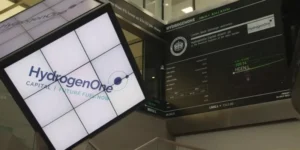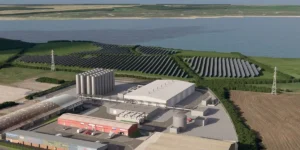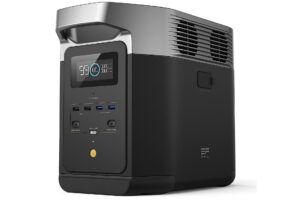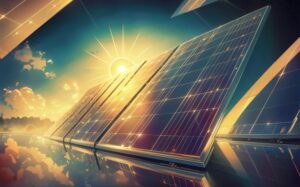Thyssenkrupp Steel launches tender for up to 151,000 tonnes of annual clean hydrogen supply in Germany
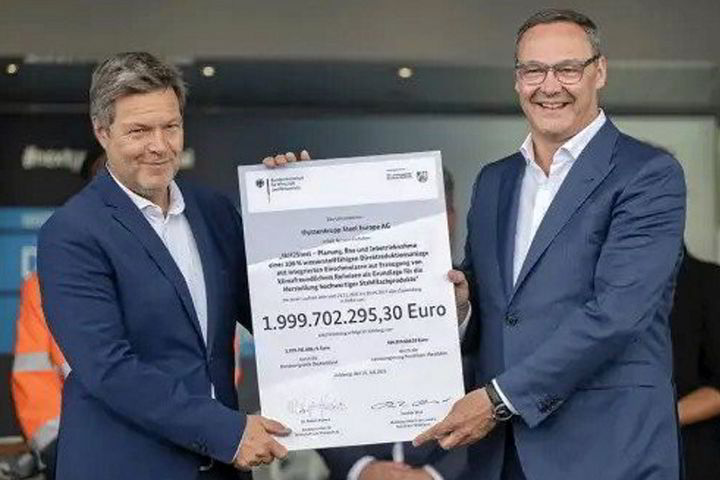
Thyssenkrupp Steel Europe has launched a tender seeking up to 151,000 tonnes of green or blue hydrogen supply for the direct-iron reduction facilities it is building at its Duisburg plant, Germany’s largest steel mill.
The company, which is Germany’s largest steelmaker, plans to complete construction of its new direct-reduced iron (DRI) facilities at the plant — which will use clean hydrogen to extract iron from ore (see panel below) — by the end of 2026, with the capacity to produce 2.5 million tonnes of DRI annually.
In the tender, Thyssenkrupp is seeking ten-year contracts for an “expected volume requirement” of 104,000 tonnes of renewable or blue hydrogen in 2028, 143,000 tonnes a year between 2029 and 2035, and 151,000 tonnes in both 2036 and 2037. That annual amount of green H2 would require about 1.5GW of electrolysers and perhaps 3GW of new renewable power (due to EU additionality requirements).
The hydrogen will be delivered via the planned national H2 pipeline network, meaning it could theoretically be produced anywhere in the world.
“The plan is to use the public H2 grid for the hydrogen supply,” a company spokesperson told Kallanish Commodities last week.
On its website, the company explains: “The planned [40km] hydrogen pipeline between Dorsten and the Duisburg district of Hamborn [where the steel mill is based] will provide a secure connection to a supraregional hydrogen network.”
Article continues below the advert
The German government said last November that a national hydrogen pipeline network will begin transporting H2 in 2025, with 9,700km in place by 2032.
It is the second tender for green hydrogen supply unveiled by a private company in Europe, following TotalEnergies’ call for 500,000 tonnes a year by 2030 for its European refineries, which was launched in September last year.
In a LinkedIn post, Thyssenkrupp Steel writes to prospective applicants: “As a hydrogen supplier of Thyssenkrupp Steel, you will accompany one of the world’s largest decarbonization projects and one of the most significant corporate transformations in Germany since the beginning of industrialization.
“As Europe’s largest integrated steel mill, we will help drive the rapid and ambitious hydrogen ramp-up in North Rhine-Westphalia, Germany, and neighboring European countries and accelerate the development of a corresponding hydrogen infrastructure — a benefit not least for the labor market, as the hydrogen value chain is likely to create a six-digit number of additional jobs in the future.”
Until 2028, the DRI facility will run wholly on natural gas, which is expected to be part of the fuel mix at the project until 2037.
Thyssenkrupp is now seeking expressions of interest, which will be followed by a request for proposals, then a request for quotation later this year.
The project — dubbed tkH2Steel, which also includes two new “melters” — is already set to receive almost €2bn ($2.18bn) of grants from the federal government and the state government of North Rhine-Westphalia. This consists of €550m to construct the new facilities, and €1.45bn to cover the additional costs of procuring green or blue hydrogen (the latter of which would be made from fossil gas with carbon capture and storage).
The company argues on its website that the demand for renewable energy and green hydrogen from the steel industry is so high “that the installed capacity of wind power, solar energy and electrolysis seems modest in comparison”.
“Just to operate Thyssenkrupp Steel’s first direct reduction plant exclusively with green hydrogen would require green electricity from 500 wind turbines,” it says, without specifying the size of said turbines.
More details about the tender can be found here.
Hydrogen is currently the only viable route to fully decarbonising the steel sector, which accounts for 7-11% of global carbon emissions at present.
Today, most steel is made using a carbon-intensive blast furnace-basic oxygen furnace (BF-BOF) method, which uses coal to both heat and extract iron from iron-oxide ore, before other substances are introduced to make steel.
Hydrogen can be used instead of coal to both heat and remove oxygen from the ore in a process known as direct-reduced iron (DRI). DRI plants have been in commercial use for some time, using natural gas as the reducing agent, but hydrogen DRI plants are now being commercialised.
Hydrogen-DRI is currently the only available method of fully decarbonising iron production. When paired with an electric arc furnace (EAF) to help turn that iron into steel, emissions could theoretically be reduced to zero.
However, as most plants today still use BF-BOF, it will require a massive amount of capital investment to realise a switchover to hydrogen-DRI and EAF, resulting in slightly more expensive green steel.

